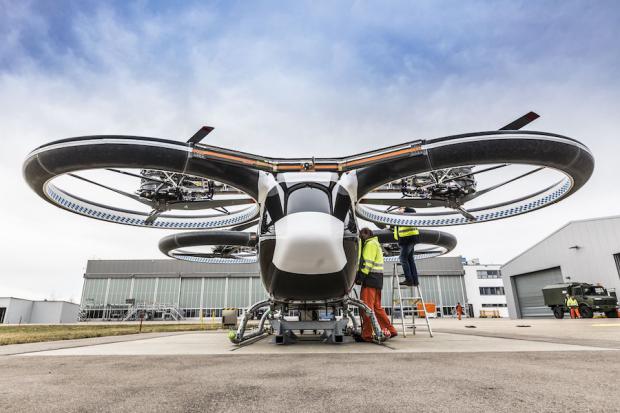
Breaking News
6.8 SPC vs. 300 Blackout: Powering Up the AR Platform
 Autism Study By McCullough Foundation Begins New Era of Free Scientific Inquiry
Autism Study By McCullough Foundation Begins New Era of Free Scientific Inquiry
 REVOLUTION DAY 8: Libertarians JOIN The Revolution
REVOLUTION DAY 8: Libertarians JOIN The Revolution
 US Government and Westinghouse $80bn Nuclear Reactor Deal
US Government and Westinghouse $80bn Nuclear Reactor Deal
Top Tech News
 Graphene Dream Becomes a Reality as Miracle Material Enters Production for Better Chips, Batteries
Graphene Dream Becomes a Reality as Miracle Material Enters Production for Better Chips, Batteries
 Virtual Fencing May Allow Thousands More Cattle to Be Ranched on Land Rather Than in Barns
Virtual Fencing May Allow Thousands More Cattle to Be Ranched on Land Rather Than in Barns
 Prominent Personalities Sign Letter Seeking Ban On 'Development Of Superintelligence'
Prominent Personalities Sign Letter Seeking Ban On 'Development Of Superintelligence'
 Why 'Mirror Life' Is Causing Some Genetic Scientists To Freak Out
Why 'Mirror Life' Is Causing Some Genetic Scientists To Freak Out
 Retina e-paper promises screens 'visually indistinguishable from reality'
Retina e-paper promises screens 'visually indistinguishable from reality'
 Scientists baffled as interstellar visitor appears to reverse thrust before vanishing behind the sun
Scientists baffled as interstellar visitor appears to reverse thrust before vanishing behind the sun
 Future of Satellite of Direct to Cellphone
Future of Satellite of Direct to Cellphone
 Amazon goes nuclear with new modular reactor plant
Amazon goes nuclear with new modular reactor plant
 China Is Making 800-Mile EV Batteries. Here's Why America Can't Have Them
China Is Making 800-Mile EV Batteries. Here's Why America Can't Have Them
Manhattan To Hamptons In 30 Minutes On This 40 Passenger Drone Bus

Most eVTOL startups (such as SureFly) are designing and developing drone taxis with a maximum capacity of between 2 and 5 seats. Kelekona's founder, Braeden Kelekona, is thinking big with a 40 passenger drone bus that weighs 10,000 pounds and has an estimated range of 330 miles, with the ability to fly between Los Angeles and San Fransico in one hour.
Kelekona appears to be developing an eVTOL vehicle inspired for mass transit in regional commutes, where passengers can avoid congested highways, traditional airplanes, and trains.
"One hundred percent we are trying to compete with public transportation," Kelekona told Digital Trends.
According to Kelekona, routes between Manhattan to the Hamptons; Boston to New York; New York to Washington, D.C.; and Los Angeles to San Francisco will cost around $85 and last for 30 minutes.
The airframe's shape is certainly impressive in terms of aerodynamics. Four fan banks power the eVTOL with two ducted fans with variable pitch blades inside each. These fan banks can lift the aircraft up and down and propel the craft forward like a traditional airplane. Kelekona said eVTOL would be powered with "batteries similar to what you see in the Model S."
"What we decided to build is a flying battery," he noted. "What that allowed us to do is have greater endurance. Instead of building an interesting airframe and then trying to figure out how to put the battery into that aircraft, we started with the battery first and put things on top of it."

 China Innovates: Transforming Sand into Paper
China Innovates: Transforming Sand into Paper

